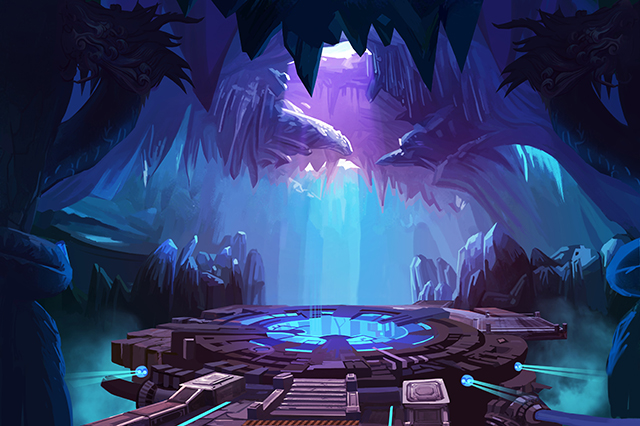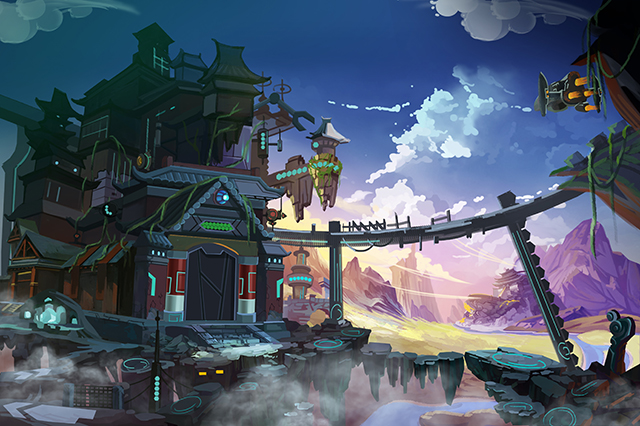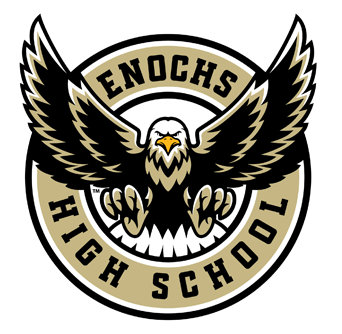Information Support and Services
Software and Systems Development
Games and Simulation
Honors Video Game Development 1-2

Do you have a passion for video games? Interested in learning how to make your own? This course will introduce you to both video game design and development; digital arts as applied to game design; and computer programming.
Students will learn state-of-the art video game design and development using the latest in industry standard and game engine software.
Some of the topics students will learn in this class above and beyond the primary units of study include an introduction to game engines, indoor level design, volumes, visual scripting, outdoor level design, level streaming, lighting, audio, textures, decals, materials, particle systems, static meshes, character and animation basics, cinematics, artificial intelligence, physics, post-process effects, and much more!
This is a first-year course in applied computer programming. General computer literacy issues describing computer hardware, software development, operating systems, and telecommunications will be covered. Students will be introduced to problem-solving analysis, algorithm design, documentation, control structures, program coding, data manipulation, logic, looping, program testing, and program maintenance. Solutions will be implemented using a high-level object-oriented programming language such as C++, C#, or Java; or one of many object-oriented scripting languages. Extensive programming projects demonstrating problem solving and implementation skills will be assigned throughout the year.
This course has been designed to ease students into the field of programming by using programming to solve problems in game development. Programming is used to bring to life the product of student’s digital artistic creations. Students will study large-scale software architecture in a games context; mathematics for game programming; game development tools for debugging; engine subsystems including engine foundation systems, rendering, collision, input, physics, artificial intelligence, character animation, and game world object models; multiplatform game engines; game programming in multiprocessor environments; tool pipelines; and the game asset database. Writing is also integrated through technical writing assignments.
Students will pursue an in-depth study of the artistic practices, fundamentals, and principals of game design, including binary space partitioning, terrain and foliage creation, animation, lighting, materials, visual effects, character creation, cinematics, post-process effects, level design, user interfaces, and audio production. Students will apply modeling, painting, sculpting, mapping, lighting, rendering, animation, compositing, and visual effects techniques. Students will demonstrate and apply what they learn through a series of creative and engaging projects. Projects integrate artistic practices and provide students the opportunity to participate in all aspects of the artistic process -- including creation, presenting, producing, performing, responding, critiquing and connecting. Projects have been aligned with the five strands of the Visual and Performing Arts Content Standards for California Public Schools including Artistic Perception, Creative Expression, Historical and Cultural Context, Aesthetic Valuing, Connections, Relationships, and Applications.
Students will develop the skills and knowledge to be creative partners in industry, while developing problem-solving, analytical thinking, and artistic habits and dispositions important for university-level studies; as they build capacity for employment in many areas of the workforce.
Units

Introduction to Game Development
Game Development Theory and Story Development
System Dynamics and Scripting Fundamentals
Game Development Tools, Functions, and Properties
Interfaces, Environments, Asset Management, and Animation
Physics and the Build Process
Constructs of Game Development
Principles of Cameras and Lighting in Game Environments
Principles of Sound and Audio for Games
Advanced Game Development Techniques
Final Project
Course Information
COURSE NUMBER: CTE1010801 (S1) CTE1010802 (S2)
RECOMMENDED GRADE LEVEL: 10-12
DURATION: 2 semesters (may be repeated for credit)
CREDIT: 5 units per semester
MEETS UC AND CSU ENTRANCE REQUIREMENTS: Yes, “f” elective
Career Preparation
Digital Art:
2D Character Artist, 3D Modeler, Advertising Designer, Animator, Character Artist, Character Rigger, Cinematic Designer, Concept Artist, Environment Artist, Game Designer, Gameplay Animator, Level/Environment Designer, Level Lighting Artist, Simulation Artist, Technical Animator, Technical Artist, Texture Artist, UI Artist, Visual Effects Artist
Programming:
AI Programmer, Animation Programmer, Audio Programmer, Cinematics Programmer, Client Systems Programmer, Data Engineer, Engine Programmer, Gameplay Programmer, Generalist Programmer, Graphics Programmer, Mobile Programmer, Multiplayer Programmer, Physics Programmer, R&D Programmer, Rendering Programmer, Server Programmer, Tools Programmer, UI Programmer
Articulation

This course is pending articulation with Modesto Junior College. Upon approval, students that complete this course with a grade of "B" or higher will receive 3 units of transferrable college credit in CMPGR 279: 3D Game Development.
SSD Pathway
This course is a part of Enochs’s Software & Systems Development pathway. Click here for more information on our pathway and the courses we offer.
